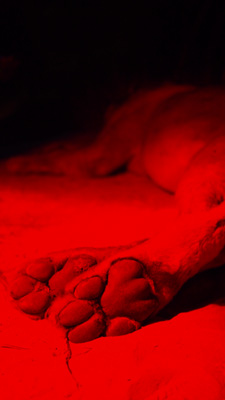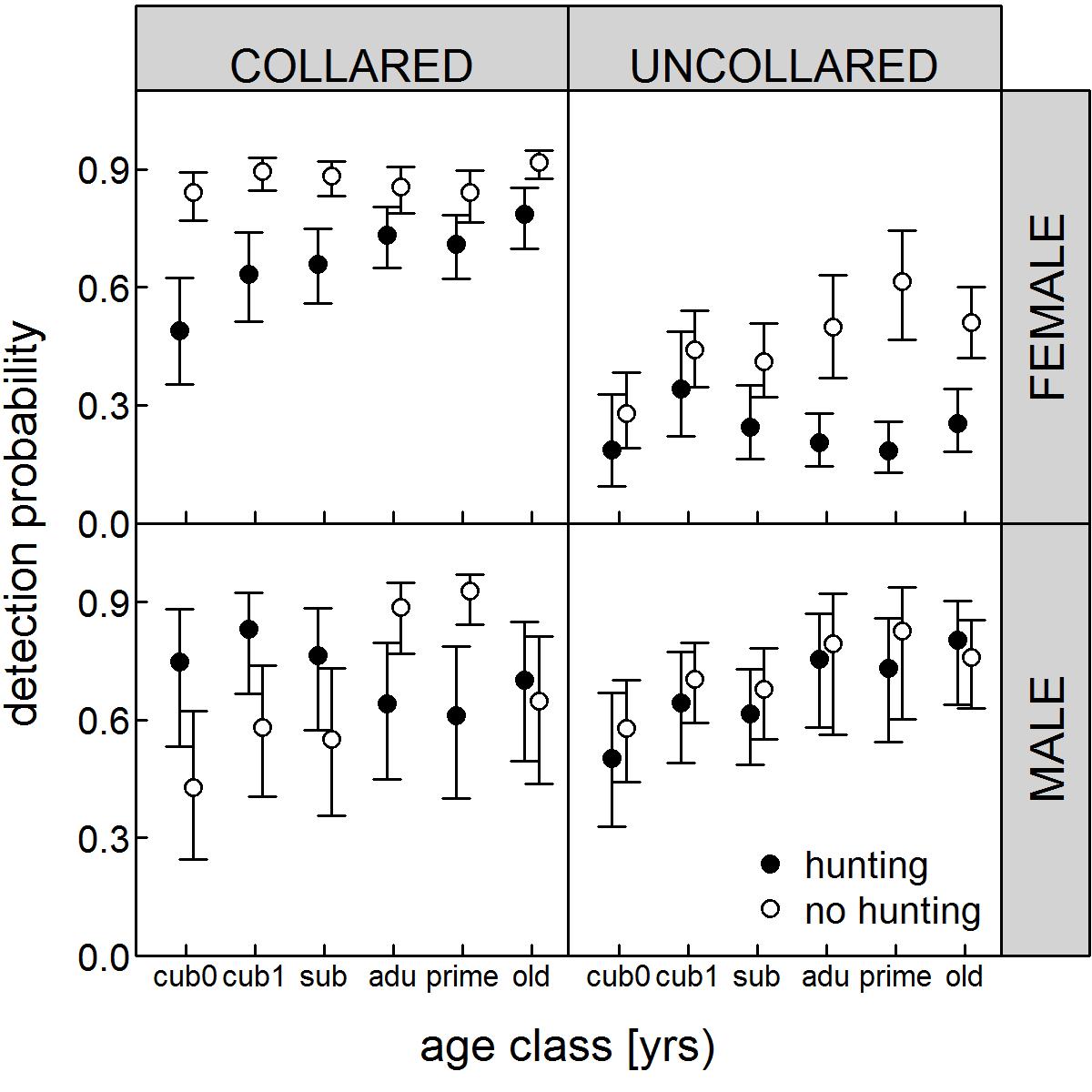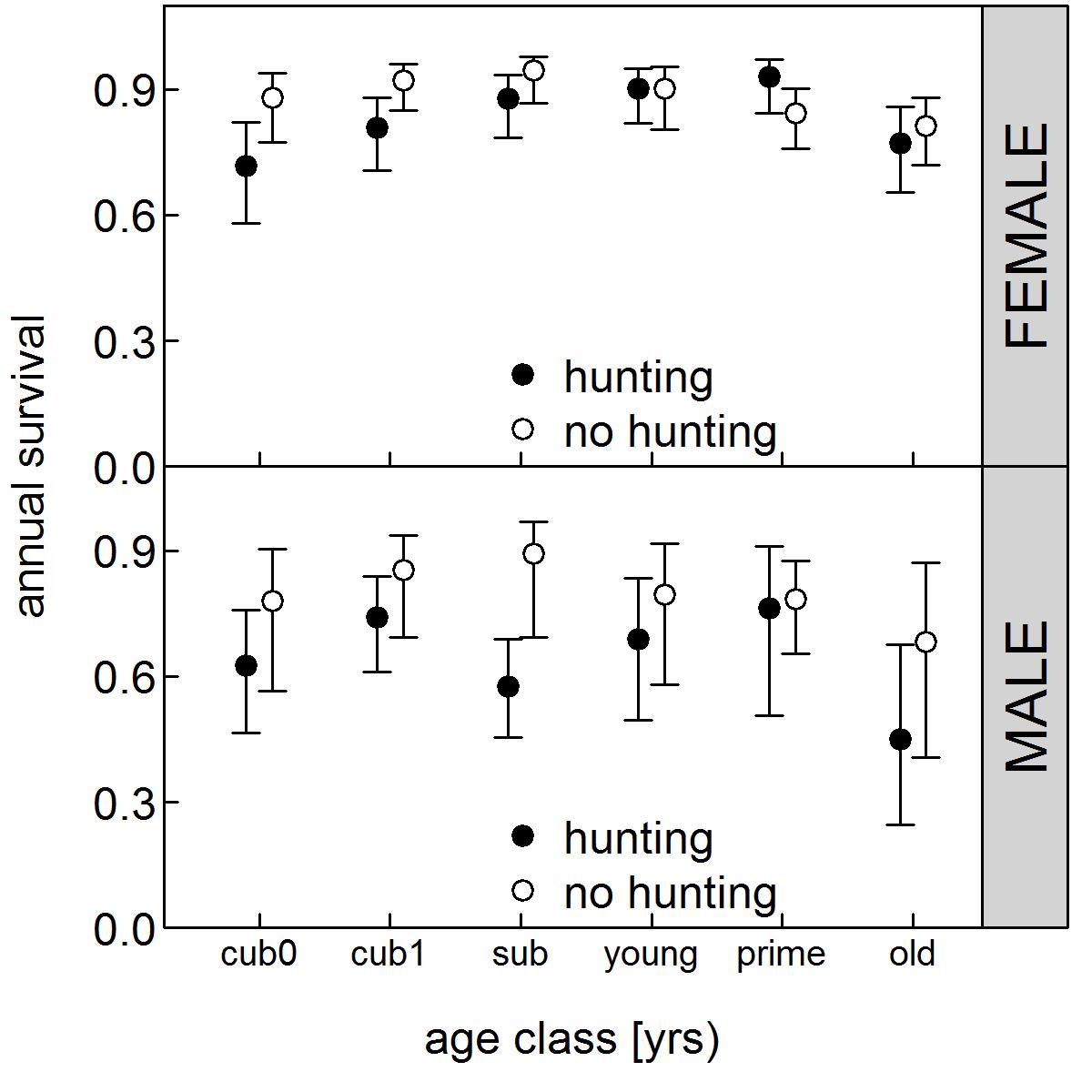Large demographic effects of trophy hunting in lions using a protected area.

Large carnivores are in decline globally and numerous factors have been identifed as threats to population persistence but precise estimates of factors influencing lion surival are difficult to acquire for several reasons. Large carnivores can be secretive, sparsely distributed, and persist at low absolute population sizes. Factors thought to affect lion desnities are often difficult to study in isolation and experimental approaches are not possible. In protected areas, lions tend to be more observable leading to the conclusion that densities are higher. However, factors influencing detection probability may be confounded with factors influencing density. Detection histories of individually indentfiable lions and models that simultaneous fit detection and survival may be useful for evaluting external effects on survival in small populations.

From 2008-2015, we compiled detection histories for 398 individually identfiable lions in South Luangwa National Park, Zambia. We used whisker patterns, scars, and other identifying marks to match lions observed on haphazard and systematic surveys against a catalogue of known individuals. We also used detectections gained from following radio-collared lions. Beginning in 2013, Zambia banned all lion hunting provide the framework for a quasi-experimental approach to study the impacts of trophy hunting on lions using a protected area.

Imperfect detection must be accounted for before estimating demographic rates or abundance. Cormack-Jolly-Seber estimates of survival and detection probability using maximum likelihood methods were fit using all lion detection histories. Analysis was done in Rmark, the R extention of Mark. Female lions associating with groups that had at least one radiocollared lion showed high detection probability but detection probabilities were generally lower when hunting was allowed. Adult males generally show less variation in detection probability, perhaps due to high movement rates amongst groups.

The best fitting model (as determined by AICc) included effects of sex, age class (new cubs, yearling cubs, subadults [2, 4) years, young adults [4, 6 yrs), prime adults [6, 8) years, and old adults [4, 21 yrs)), hunting, and sex-age class-collared interaction. The hunting ban had largest effects on sub-adult males that typically disperse from their natal pride.